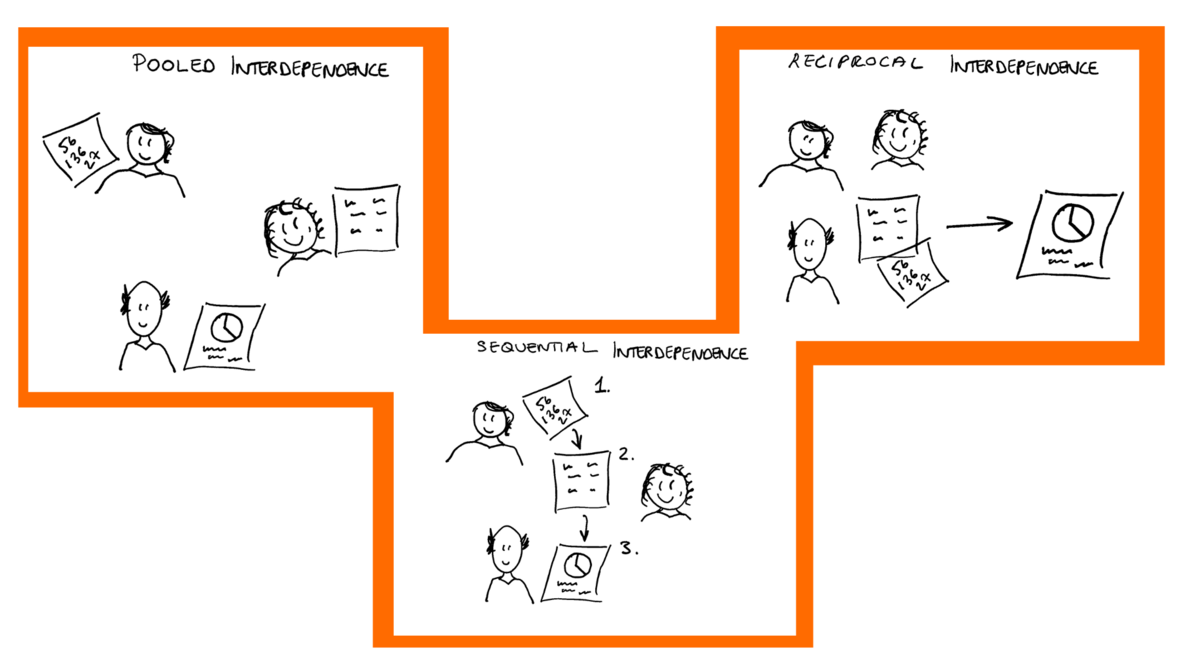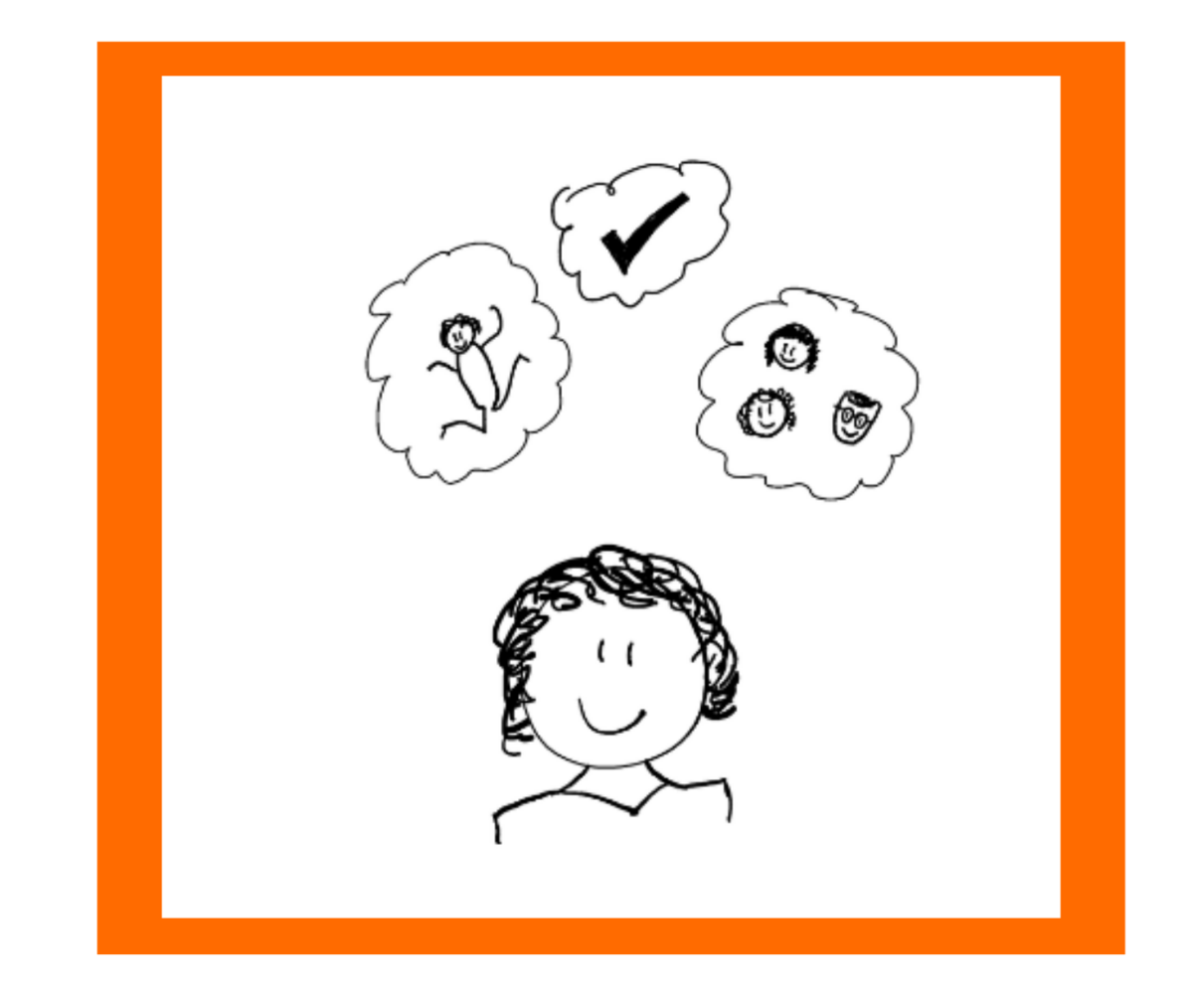Applications of Visible Teamwork in Remote Teams
Managing remote teams, particularly when the transition has been reactive and overnight, can feel challenging. Striking the balance of accountability vs oversight, while maintaining a productive and happy team, means getting the right structures and practices in place.
The three principles of our bespoke ‘Visible Teamwork’ framework — Deliberate Communication, Work Visibility, and Planned Spontaneity — create a lens through which you can consider the different elements of your communication within online teams, whatever work you are doing.
Every organisation, every team, is unique — so in order to add maximum value, application of the framework needs to be as unique as you are. Following a series of episodes in our 21st Century Work Life podcast, in this article we explore how task interdependence, trust, and motivation impact on Visible Teamwork, and how this can inform implementation in your team.
Task interdependence in your team
The extent to which your day-to-day work interacts with things other people in your team are doing will have a significant impact on all aspects of Visible Teamwork. Do you work loosely alongside one another in service of shared objectives, or are your daily activities embedded and intertwined more deeply? Perhaps it varies, at different stages of what you do, or by particular projects or events.
If your work is highly integrated with that of other people, you’ll need to focus closely on making the work and workflow visible — perhaps through some kind of project management application, where progress and critical paths are manifest, and everything from deadlines to resources are available for all to see.
You’ll need to communicate about progress, and be continually aware of how you getting things done (or otherwise) impacts on the work of others, so they’re not waiting for you to complete things in order to move forward, and vice versa. Perhaps your day-to-day communication is at risk of becoming overly transactional because of this — so how much of the updating could instead be made visible in the work itself, so no one has to ask for it or make time for reporting?
When the workflow and related conversations are in a shared place, it’ll be easy to spot if anyone needs help or additional resources to keep the whole shared endeavour on track. This can result in the whole team feeling more deeply connected to the end objective, helping colleagues to trust and support one another. And if you have open conversations, you’ll potentially discover new connections and helpfulness within the team.
In other circumstances you might be working closely together yet independently, carrying out tasks with a shared objective but in parallel rather than sequentially. In this case the way we communicate may become more important, ensuring we pool understanding and learning, and feel connected to one another. Perhaps this will lead to a more cyclical kind of interaction where we add value to one another’s performance, even though we’re not interdependent at the task level — so ensuring opportunities for planned spontaneity in our workflow matters too, and a chance to spark ideas and creativity together — which need not be in a synchronous meeting or session for that purpose (e.g. you could comment on a shared whiteboard or document when inspiration strikes).
It’s easy for teams with pooled and fluid interdependence to feel overly constrained by rigid and complex workflows, just as a more intricately sequential team can feel disconnected by a lack of information and communication practices — so you will need to adopt systems which are right for you, and keep them under review.
If you want to dig deeper into task interdependencies in remote teams, have a listen here:
Visible teamwork and trust
When we work remotely, it is possible for trust to suffer, but we can use the principles of Visible Teamwork to build and maintain trust in each other and the systems we adopt. However, it is also possible for our teamwork practices to undermine trust, particularly when changes are introduced, if the specific practices or the reasoning behind them are poorly understood.
Trust is a very individual thing after all, and we all have different inclinations to trust other people, quickly or slowly. We might not even be able to define what makes us trust a person, or a process, as it seems to happen on an intuitive level — but Charles H Green’s ‘trust equation’ identifies 3 important factors which increase our trust in others:
Reliability: (being the sort of person who follows through and does what they say they will);
Integrity: (when our actions align with values);
Transparency: (when our intentions and agendas are open and consistent).
When it comes to work we also need to trust in someone’s competency and capacity to actually do the work, and we may need to have trust in the system itself — to provide the necessary tools and resources (which includes enough time), that we can each deliver on our commitments.
Deliberate Communication underpins reliability and commitment, along with accountability. For true transparency, open conversations are the aspiration, which also builds a sense of integrity where everyone’s progress and commitments are made clear.
Visible work and a transparent workflow help us to trust the system and our role within it, as well as seeing how our roles interlock — and this also provides evidence for competence and reliability at the same time. Planned Spontaneity can also contribute to a sense of trust by enabling us to relate better to our colleagues and see how their ways of thinking and behaving are similar to or different from our own, which deepens the affective trust that only comes from connectedness.
However, when designing Visible Teamwork practices to support trust, we must be careful not to damage it. Trust takes time to build, but can be upset very quickly, in any circumstances.
It’s great if we design a workflow whereby managers and everybody can see the work being done in real time, as this reduces friction, time spent reporting, and the need for disruptive communication. But if this is introduced without adequate context it might be perceived as a micromanaging response to lack of reliability or accountability.
And if we introduce processes which generate their own friction, such as ticking off a task list or completing a time-sheet, this can have a similar impact.
“Don’t they trust me to do the work, why do I now have to do an additional thing to prove that I have done it? If I forget to tick off the task, will I be seen as unreliable, untrustworthy — even though I did actually DO the activity?”
Having an open conversation about what the whole team needs to feel secure in working together and accountable to one another might be helpful, and surface any tensions that your visible teamwork can address by design.
Listen to more on this here:
Engaging motivation
To successfully implement Visible Teamwork practices then, we need to understand what motivates individual actions within our teams in the first place - what drives us as individuals, to collaborate as a team?
Deci and Ryan’s theory of intrinsic motivation indicates we should assume positive intent, in ourselves and others, though this intent can be thwarted by circumstance and context. Our motivation for this is fuelled by a sense of autonomy, competence, and relatedness.
Autonomy: Remote work natively supports the concept of autonomy of location, but by using Deliberate Communication and Work Visibility we can go further, and give people more choice over when and how they do the work, maybe even with whom they self-organise and collaborate.
Competence: Such systems will also fuel competence too, as we give people what they need to do their work and then get out of the way. Contextual learning and information can form part of Planned Spontaneity, as can Open Conversations which the whole team can learn from informally. But the important thing in remote work is that all learning requires some degree of intentionality, it’s much harder for people to pick things up indirectly.
Relatedness: This can suffer though, in remote work, if it is not specifically considered and addressed. Planned Spontaneity and deliberate ways for people to connect and align with each other, outside of the work, builds trust and social capital — making it safe to disagree and give each other honest feedback, to own our mistakes, and to ask for help. We’re motivated to champion and support people we know, and feel some connection to, and in the colocated workplace these connections and areas of common feeling and thinking arise organically — so it’s essential that our remote work practices find ways of replacing this, and ensuring people get to know each other.
Listen to more about motivation and Visible Teamwork in this podcast:
Putting it into practice
Involving the whole team in designing your Visible Teamwork practices around the three elements which comprise it is, as an exercise, extremely valuable. An open and collaborative process will surface areas of concern in terms of motivation, trust, and the ways in which people work together, and help you put in place new systems and workflows which support the needs of each individual as well as the team’s shared objectives.
You can start by reviewing what’s already working in your team, and identifying the gaps in your current communication. Decide what you need to do, and which tech will help you do it, and voilà, you’re ready to make your teamwork visible.
External facilitation of this conversation can be helpful, so if you’d like to discuss how Virtual Not Distant can help you, do get in touch.


